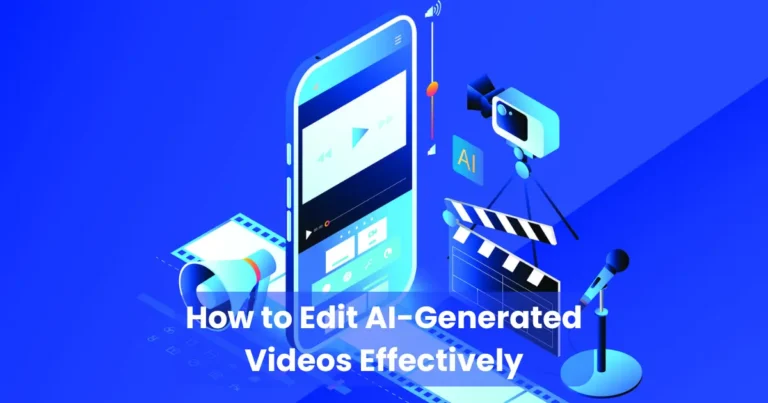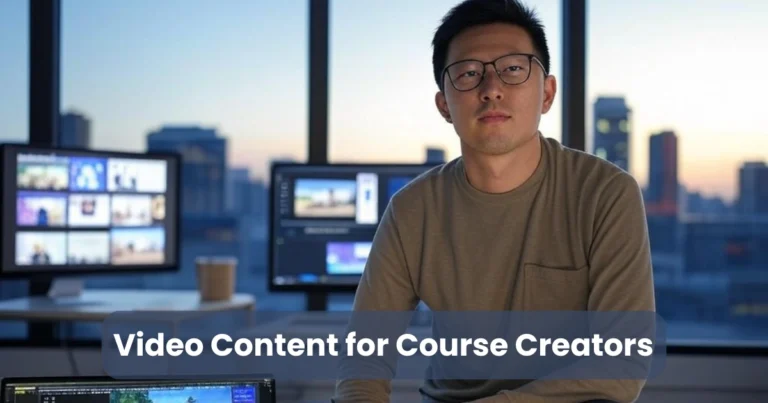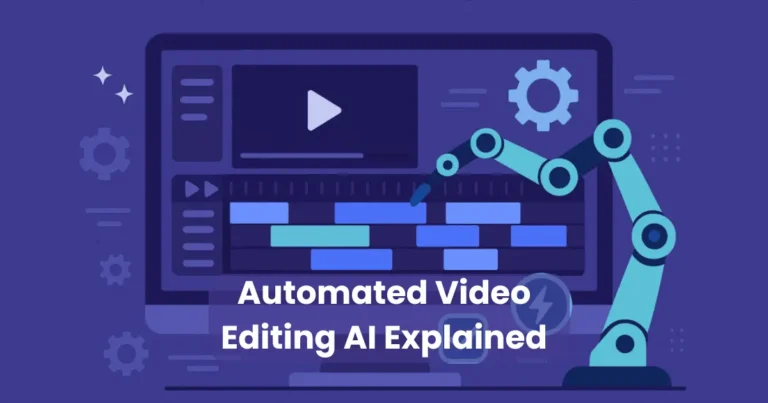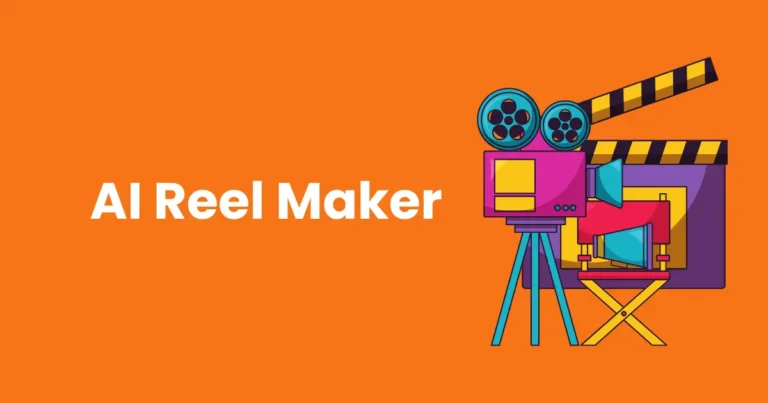AI-Assisted Video Editing: Tools & Tips for 2025

Contents
- 1 What is AI-Assisted Video Editing?
- 2 Why AI-Assisted Video Editing is a Game-Changer
- 3 Top AI-Assisted Video Editing Tools in 2025
- 4 How to Use AI-Assisted Video Editing: Step-by-Step Guide
- 5 Tips for Maximizing AI-Assisted Video Editing
- 6 Challenges and Limitations of AI-Assisted Video Editing
- 7 The Future of AI-Assisted Video Editing
AI-assisted video editing has transformed the way creators produce high-quality content, streamlining workflows and enhancing creativity. In 2025, artificial intelligence continues to reshape video production, making it faster, more accessible, and highly efficient. Whether you’re a professional filmmaker, a YouTube vlogger, or a social media influencer, AI tools empower you to edit videos with precision and flair, all while saving maximum time. This article explores the power of AI in video editing, diving into its benefits, top tools, practical tips, and future trends to help you create stunning videos effortlessly.
What is AI-Assisted Video Editing?
AI-assisted video editing refers to the use of artificial intelligence technologies to automate and enhance various aspects of the video production process. From cutting clips to applying effects, AI tools analyze footage, suggest edits, and even generate content, reducing manual effort. These tools leverage machine learning algorithms to perform tasks like scene detection, audio synchronization, and color correction, allowing creators to focus on storytelling rather than technical details.
Transitioning to AI-powered solutions, you can save maximum time while achieving professional-grade results. Unlike traditional editing software, which requires extensive manual input, AI tools streamline repetitive tasks, making them ideal for beginners and seasoned editors alike. For instance, AI can automatically trim unnecessary footage, apply filters based on mood, or even generate subtitles, cutting editing time significantly.
Why AI-Assisted Video Editing is a Game-Changer

1. Time Efficiency
One of the most significant advantages of AI-assisted video editing is the ability to save maximum time. Tasks that once took hours, such as color grading or audio balancing, can now be completed in minutes. AI algorithms analyze footage quickly, identifying key moments and suggesting edits that align with your creative vision. For example, tools like Adobe Premiere Pro’s AI-powered features can auto-refine cuts, ensuring seamless transitions without manual tweaking.
2. Accessibility for All Skill Levels
AI tools democratize video editing by making it accessible to beginners. You don’t need advanced technical skills to create polished videos. Platforms like Runway or Descript offer intuitive interfaces that guide users through the editing process, with AI handling complex tasks like background removal or voiceovers. Consequently, creators can focus on their narrative while AI takes care of the heavy lifting.
3. Enhanced Creativity
Far from stifling creativity, AI-assisted video editing amplifies it. AI tools suggest creative effects, transitions, and music tracks based on your content’s tone and style. For instance, platforms like Lumen5 can transform blog posts into engaging videos by selecting relevant visuals and animations, giving creators fresh ideas to explore. As a result, you can experiment with innovative storytelling techniques without spending excessive time on execution.
4. Cost-Effectiveness
Hiring professional editors or investing in high-end software can be expensive. AI-assisted video editing tools offer affordable alternatives, often with free or low-cost plans. Tools like CapCut or InVideo provide robust features at a fraction of the cost, making professional-quality editing accessible to small businesses and independent creators.
Top AI-Assisted Video Editing Tools in 2025
To help you choose the best tool for your needs, here’s a roundup of the top AI-assisted video editing platforms in 2025, each designed to save maximum time and elevate your content.

1. Adobe Premiere Pro (with Sensei AI)
Adobe’s Sensei AI integrates seamlessly into Premiere Pro, offering features like Auto Reframe, which adjusts footage for different aspect ratios, and Scene Edit Detection, which identifies cuts in raw footage. These tools streamline workflows, allowing you to focus on creative decisions. Additionally, Sensei’s AI can enhance audio quality and remove background noise, ensuring polished results.
2. Runway
Runway is a cloud-based platform that excels in AI-driven video editing. Its standout features include background removal, motion tracking, and text-to-video generation. With Runway, you can create cinematic effects without advanced skills, as the AI suggests edits and applies them in real-time. This tool is perfect for creators looking to save maximum time while experimenting with cutting-edge effects.
3. Descript
Descript revolutionizes video editing by focusing on audio-driven workflows. Its AI-powered Overdub feature creates realistic voiceovers, while automatic transcription generates editable text from your footage. By editing the transcript, you can cut or rearrange video clips instantly, making it ideal for podcasters and vloggers aiming to save maximum time.
4. CapCut
CapCut, developed by ByteDance, is a mobile-friendly editing tool with robust AI features. It offers auto-cut templates, background removal, and AI-generated captions, making it a favorite among TikTok and Instagram creators. Its intuitive interface ensures quick edits, even on the go, helping you produce viral-ready content efficiently.
5. Lumen5
Lumen5 specializes in transforming text-based content into engaging videos. By inputting a blog post or script, the AI selects relevant visuals, music, and transitions to create a cohesive video. This tool is perfect for marketers and businesses looking to repurpose content quickly, saving maximum time in the process.
How to Use AI-Assisted Video Editing: Step-by-Step Guide
To maximize the benefits of AI-assisted video editing, follow these steps to create professional videos while saving maximum time.

Step 1: Choose the Right Tool
Select a tool that aligns with your skill level and project needs. For complex projects, Adobe Premiere Pro or Runway offers advanced features, while CapCut or Lumen5 suits quick, social media-focused edits. Research each platform’s AI capabilities to ensure it meets your goals.
Step 2: Upload and Organize Footage
Import your raw footage into the chosen platform. Most AI tools automatically organize clips by analyzing content, detecting scenes, and suggesting a logical sequence. For example, Runway’s AI can group similar shots, reducing manual sorting time.
Step 3: Leverage AI Automation
Use AI features like auto-cuts, color correction, or audio enhancement to streamline the editing process. For instance, Descript’s transcription tool lets you edit video by modifying text, while Adobe’s Auto Reframe adjusts clips for different platforms, saving maximum time.
Step 4: Customize with Creative Touches
While AI handles repetitive tasks, add your personal flair by tweaking transitions, effects, or music. Most tools offer AI-generated suggestions, such as CapCut’s auto-templates, which you can customize to match your brand’s aesthetic.
Step 5: Review and Export
Preview your video to ensure it aligns with your vision. AI tools often provide real-time rendering, allowing you to make quick adjustments. Once satisfied, export the video in your desired format, optimized for platforms like YouTube, Instagram, or TikTok.
Tips for Maximizing AI-Assisted Video Editing
To get the most out of AI-assisted video editing and save maximum time, consider these practical tips:

- Use Templates: Many AI tools offer pre-designed templates for intros, outros, and transitions. These save time and ensure a polished look.
- Batch Process: Edit multiple videos simultaneously using AI’s automation features, such as bulk captioning or color grading.
- Stay Updated: AI tools evolve rapidly. Regularly check for updates to access new features and improve efficiency.
- Combine Tools: Use multiple platforms for specific tasks. For example, pair Descript’s audio editing with Runway’s visual effects for a comprehensive workflow.
- Optimize for Platforms: Leverage AI to tailor videos for specific platforms, such as vertical formats for TikTok or square videos for Instagram.
Challenges and Limitations of AI-Assisted Video Editing
While AI-assisted video editing offers numerous benefits, it’s not without challenges. Understanding these limitations helps you use AI tools effectively.

1. Learning Curve
Although AI simplifies editing, some tools, like Adobe Premiere Pro, require time to master. Beginners may need tutorials to fully utilize advanced AI features.
2. Over-Reliance on Automation
AI can sometimes produce generic results, lacking the nuanced touch of human creativity. To avoid this, customize AI suggestions to reflect your unique style.
3. Technical Requirements
AI tools, especially cloud-based ones like Runway, require stable internet and decent hardware. Ensure your setup meets the platform’s requirements to avoid lag or crashes.
4. Privacy Concerns
Uploading footage to cloud-based AI platforms raises privacy issues. Always review a tool’s data policies and opt for reputable providers to protect your content.
The Future of AI-Assisted Video Editing
As AI technology advances, the future of video editing looks promising. In 2025 and beyond, expect even more sophisticated tools that save maximum time and push creative boundaries. Emerging trends include:

- Real-Time Collaboration: AI platforms will enable teams to edit videos simultaneously, with AI suggesting edits based on collective input.
- Advanced Generative AI: Tools will generate entire video sequences from text prompts, allowing creators to produce content with minimal footage.
- Personalized Editing: AI will analyze viewer preferences to tailor videos for specific audiences, boosting engagement.
- AR/VR Integration: AI will streamline editing for immersive formats like augmented and virtual reality, opening new storytelling possibilities.
Conclusion
AI-assisted video editing is revolutionizing content creation, offering tools that save maximum time while enhancing quality and creativity. From Adobe Premiere Pro’s powerful AI features to CapCut’s mobile-friendly templates, these platforms cater to creators of all levels. By leveraging AI’s automation and creative suggestions, you can produce professional videos efficiently, whether for social media, marketing, or personal projects. As AI continues to evolve, staying updated on new tools and trends will keep you ahead in the fast-paced world of video production. Start exploring AI-assisted video editing today to transform your workflow and captivate your audience.






